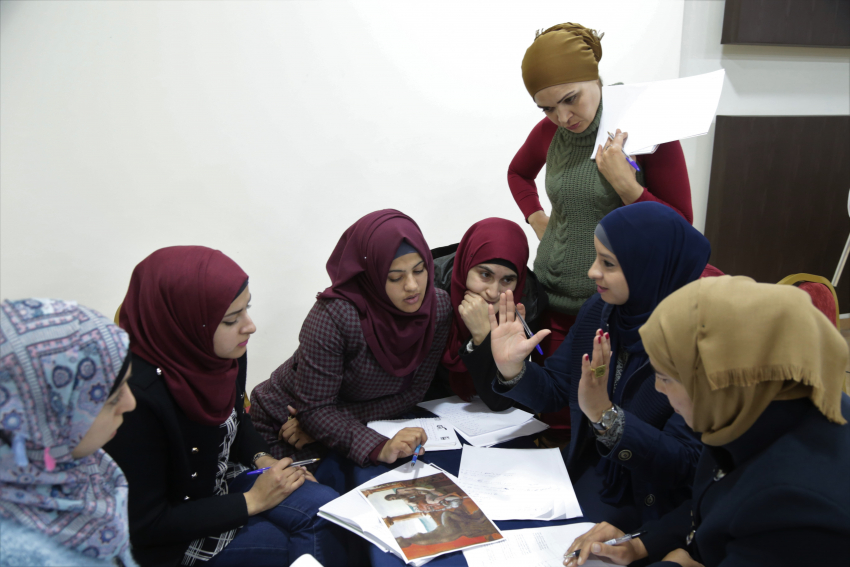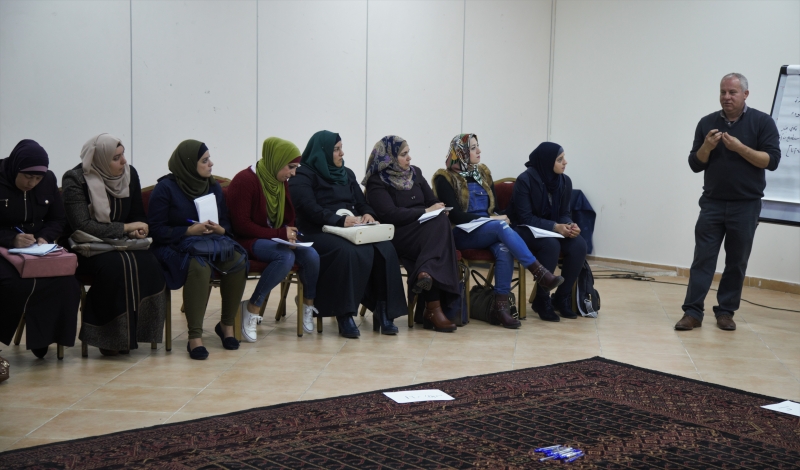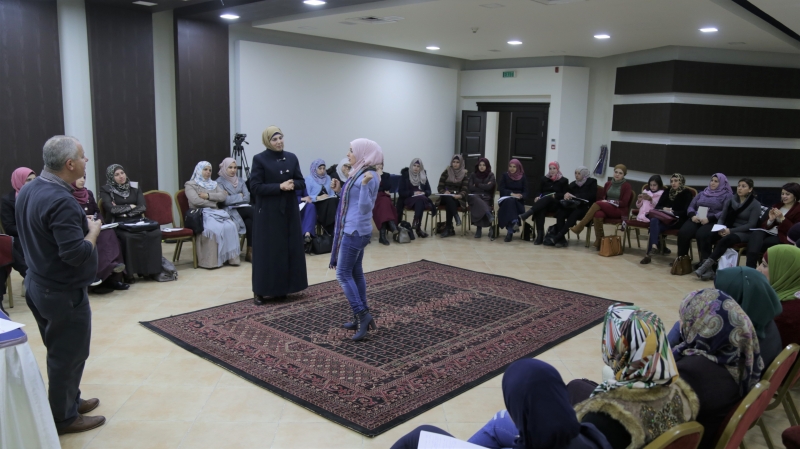
“I wrote a beautiful sentence on the blackboard, but the teacher punished me by making me erase it with my bare hands,” lamented Bissan Abed, one of the kindergarten teachers that took part in a workshop on the practice of self-writing in a professional context. She added, “That was my first experience with writing and education - and certainly perseverance as well”.
The workshop, organized by the AMQF Educational Research and Development Programme (ERDP), revolved around writing on one’s self and profession. The event was held recently, led by ERDP researchers, Malek Rimawi and Vivian Tannous. 45 kindergarten teachers from the Professional Development Programme for Early Childhood Educators participated.

The workshop focused on the practice of telling one’s personal and professional story as an ongoing and living biography, told by a narrator on a person carrying their very name. Participants were gradually led from the process of writing one’s ‘self’ in a void to writing on “one’s self within the world”. The featured exercises moved the participants from a “separate self” into a “self within the world” – a ‘self’ rooted in time and space, connected to others through events. Events being the building blocks of a person’s story, the participating teachers wrote their stories in the form of reminiscences and flashbacks into different periods of the past. In a dramatic context, “a character that fails to sense its own existence and know where it stands, cannot put its memories into order and will thus fail to determine its own identity. It is a person that is bound to lose their ‘self’ because they have lost their story”.
During the workshop, teachers’ memories flowed in: “I am Aya. I was born into the only Muslim household in a Christian neighbourhood in Bethlehem,” wrote one of the participants. “I was delivered by a Christian doctor at the time of the Maghreb call to prayer. The doctor gave me the name ‘Aya’ [literally, a verse or sign from God].”
“My mother’s labour started at night. I didn’t wait for her to reach the hospital. I was born in the car. My uncle’s wife raised me for my mother to see her newborn baby, still attached to her: big eyes, large nose, wide forehead… and most importantly, it was Rasha [a girl], not Rami [a boy].”
“I was my parents’ only unplanned child. My mother conceived by mistake and my father wanted her to have an abortion. But my mom is a religious woman and she refused. When I was born, my father looked at me, kissed my hand and said, ‘This one will be worth a thousand men’.”
The workshop turned into a stream of stories about birth and beginnings – different beginnings from various times and places, with other people present. The stories were being constructed in a way whereby the ‘self’ sees itself within a narration process.
Each story was gradually built into a plot revolving around an allegorical theme:
· “I am the daughter of the night and the late hour. I am the constant surprise”
· “I am the unique one, where all the differences meet and coexist”
· “I am she who comes by mistake, the wrong that always finds a right and a reason to be”
Samples of the teachers’ stories were published in Ru'a Tarbawiyya Magazine and used to analyze junctures in narratives and shifts in the life paths of their authors.

“May Ms. Bissan Abed from the kindergarten teaching staff come forward to accept her honorary shield and certificate of appreciation?’ I hear this sentence at the end of every schoolyear. I go up to the stage feeling no pride in whatever I have accomplished.”
“I had never aspired to be a teacher to a group of children whose experience in life could be summed up in nestling in a warm lap for four years. Children as tiny as ants who couldn’t tell the difference between an ‘A’ and a ‘B’ or use a toothbrush… I often ask my mother, ‘how can someone as messy as me be a good teacher to them? To this day, I have never made my bed even once or learned how to use a potato peeler properly.”
The above story was presented as an example of a personal story taking the form of a narrative studded with twists and turns that make the story more than a series of events, but a sequence of endless rebirths. It is a personal story that starts with a problem: how can a messy kindergarten teacher who can’t peel potatoes properly set a good example for young children? This conundrum raises questions in the reader’s mind, engages them and helps them build broad expectations.
